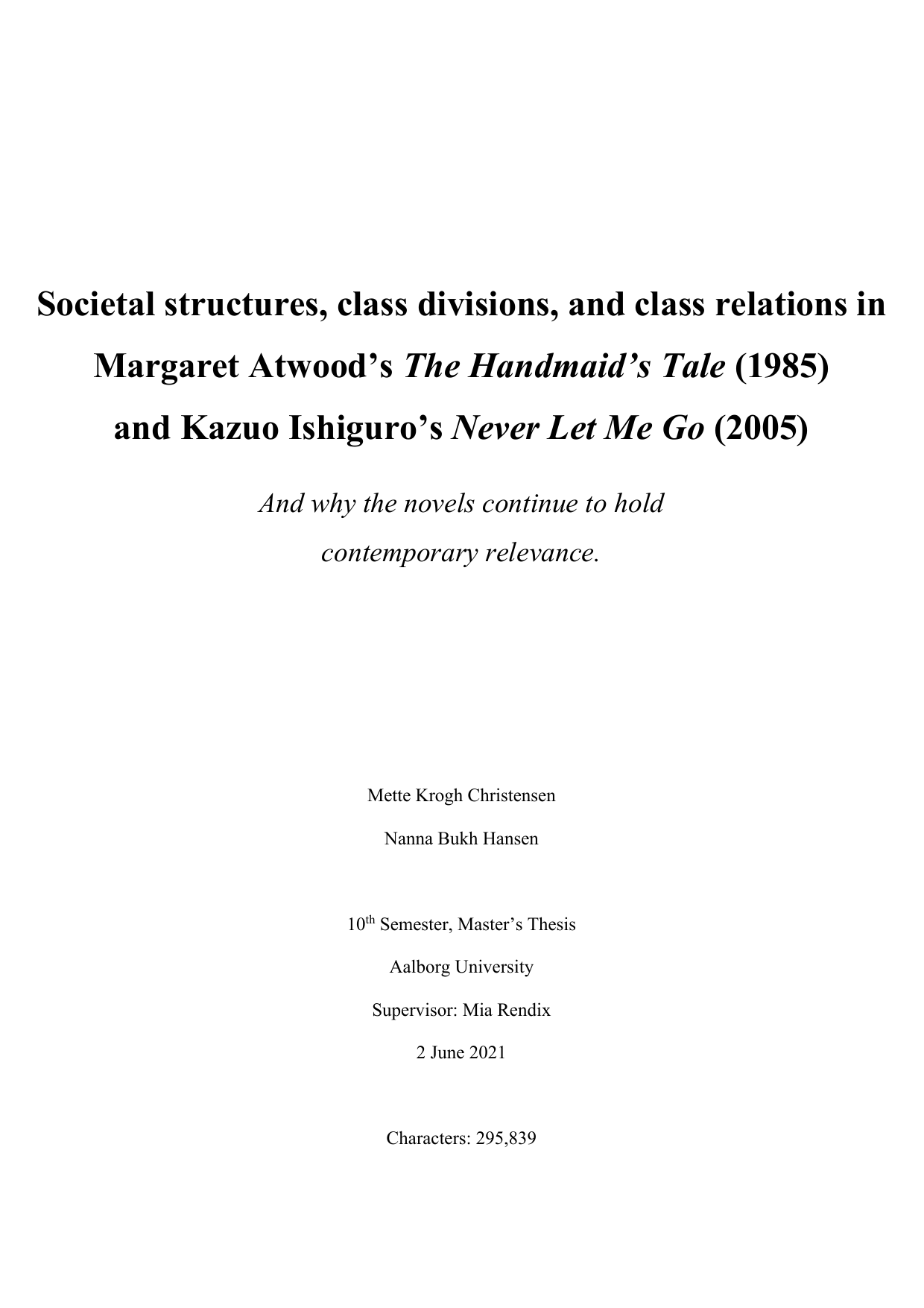
Societal structures, class divisions, and class relations in Margaret Atwood's The Handmaid's Tale (1985) and Kazuo Ishiguro's Never Let Me Go (2005) - And why the novels continue to hold contemporary relevance.
Authors
Term
4. term
Education
Publication year
2021
Submitted on
2021-05-31
Pages
123
Abstract
This MA thesis investigates the portrayal of social division, societal structure, class relations and the suppressors utilization of the oppressed in the Margaret Atwood’s The Handmaid’s Tale (1985) and Kazuo Ishiguro’s Never Let Me Go (2005) when analyzed from a Marxist perspective. This is examined by the use of Fredric Jameson’s The Political Unconscious; Friedrich Engels and Karl Marx’ class theory; and Michel Foucault’s notions of Docility, Panopticism, and Punish. The separate analyses investigate the protagonists' lives in relation to the portrayal of insolvable conflicts, ideological oppositions, and class relations as well as the creation of docile bodies, surveillance societies, and measures of punishment and how these measures are utilized in the class relations. Through the analyses, it is clear that both novels portray oppositional ideological standpoints, which enables an investigation of the portrayal of the class divisions, their interrelations, and power relations. Conclusively, it is evident that they share several thematics, such as surveillance, social inequality, punish and humanity, which are also evident in contemporary, western, society, wherefore it is concluded that the novels continue to be relevant, when read from this Marxist point of view.
Keywords
Klasse ; Samfundsstruktur ; Ideologemes ; Ideologi ; Dystopi ; Straf ; Panopticism ; Karl Marx ; Friedrich Engels ; Michel Foucault ; Fredric Jameson
Documents
